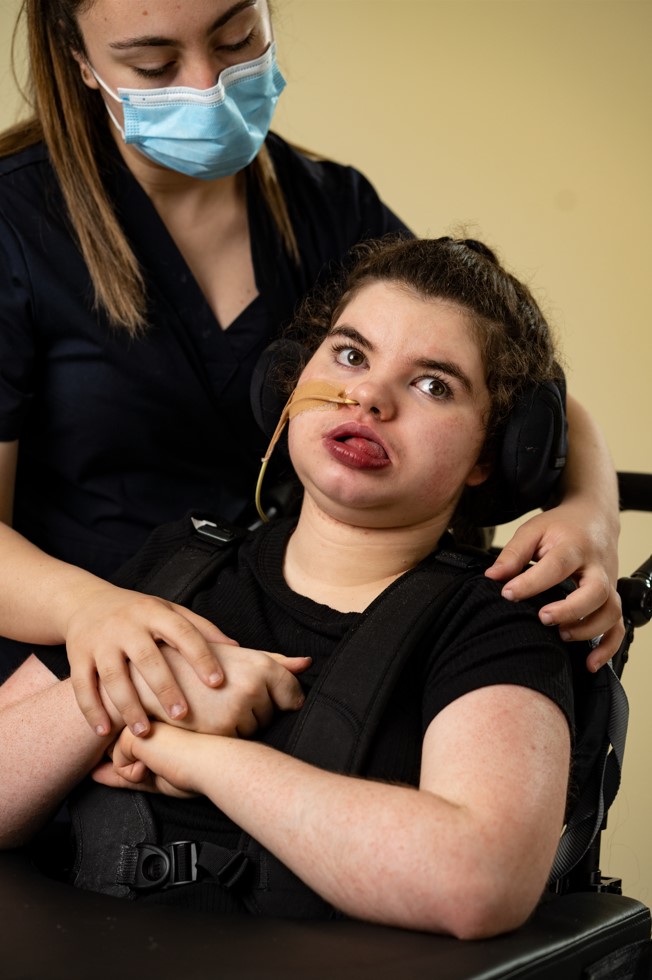Did you know that there are more than 7,000 Australians and New Zealanders who rely on tube feeding in their home?
Tube feeding is a way of providing nutrition to people who are unable to eat or drink or are unable to eat or drink enough to support their needs.
There are many different reasons why a child, teen or adult may need a feeding tube. In some cases, early feeding challenges such as fussy eating or swallowing difficulties may require a temporary feeding tube. In other cases, chronic illness or disability may mean it is unsafe to eat by mouth. In both instances, a feeding tube can empower young people and their supports to maintain their independence and quality of life.
At Allowah, we’re grateful for the life-saving role of tube feeding in enabling our young people to thrive. We want to shine a spotlight on this important topic and share a bit about what tube feeding is and the role of dietitians in supporting tube-fed clients!
What is a feeding tube?
A feeding tube is the medical device that allows individuals to get the nutrition they need, without eating or drinking orally.
There are two types of feeding tubes: Nasal tubes and Abdominal tubes.
Nasal tubes are typically used as a short-term solution when it is expected that a person will likely be able to eat in a couple of weeks. The tube passes through the nose and into the stomach or small intestine.
Abdominal tubes are used when someone is expected to need to rely on tube feeding for a long period of time. These tubes are directly inserted into the stomach (gastrostomy) or small intestine (duodenum or jejunum).
How do they work?
A combination of water, specialised liquid formula (feed) and/or blenderised tube feeds are placed down the tube.
Some people receive feeds at regular mealtimes throughout the day over a short period of time (bolus feeds). Other people may need a feeding pump to help provide their feed over an extended period, several times a day (intermittent feeds). For others, a feeding pump may be needed to help provide the feed throughout the entire day (continuous feeds).
A dietitian will provide a plan outlining how much water and nutrition is needed each day. A dietitian will also help to decide whether someone would benefit from bolus, intermittent or continuous feeds.

What are blenderised tube feeds?
Essentially, a blended or blenderised feed is a mixture of regular food that has been placed into a blender or food processor and turned into a smooth puree (thin liquid). This liquid is then provided via a person’s feeding tube.
Blenderised feeds have been found to improve symptoms such as vomiting, reflux and abnormal bowel habits. While there can be many benefits, it can be difficult to get the right consistency or plan the right amount of nutrition, every day.
A dietitian can help tube-fed clients to get the right consistency for their blenderised feed. Dietitians can also help clients by providing standardised or supplemental recipes that can help them to meet their nutrition needs.
What are the benefits of tube feeding?
Feeding tubes provide a lifeline for people who are physically unable to eat or drink enough orally for small or long periods of time. They can also:
- Can reduce psychological stress in people and families who are physically able to eat and drink but for other reasons are unable to.
- Provide a safety net for children with delayed feeding skills or children or adults undergoing rehabilitation who are learning how to eat.
- Be used to support people with illness or disability that means they can eat sometimes, but not always.
- Reduce the risk of malnutrition and associated complications so that people needing tube feeds can stay healthy and thrive.
What is the role of a dietitian in tube feeding?
Dietitians play a huge role in tube feeding that goes beyond developing feeding plans so that people can meet their nutrition requirements. Dietitians can also:
- Help troubleshoot nutrition-related complications including vomiting, constipation or diarrhoea.
- Recommend changes in how feed is provided (bolus, intermittent, continuous), to support independence and improved daily routines.
- Provide education and training to individual who may support someone who is tube-fed.
- Identify problems or risks with the tube or tube site.
- Support tube-feeding weaning and transitions to eating and drinking by mouth (if possible).

